Hampi
Wednesday, 10th March 2010 by Ian Brown
The village of Hampi is a site of Hindu pilgrimage and the location of the former capital city of the Vijayanagara empire. Its temples and ruins are a World Heritage Site collectively known as The Group of Monuments at Hampi.
The Monuments can generally be grouped into three sections; the Sacred Centre, the Riverside Ruins and the Royal Centre.
The Sacred Centre
The focal point of the Sacred Centre is the Virupaksha Temple. Hampi's history as a Hindu holy site dates to about the 7th century – long before the empire took hold – though it has been expanded by different rulers through the ages. The most identifiable structure - a nine-tiered tower - is actually a gatehouse leading to the inner courtyards which house the main temple and various shrines.
The ceremonial road running east from the temple is known as Hampi Bazaar. Originally lined with market stalls and the homes of wealthy citizens, parts of this street have now been taken over by poor local residents and those running businesses aimed at tourists.
The Vijayanagara Empire thrived from the 14th century, dominating this part of India. With up to a quarter of a million habitants, Hampi was possibly the largest city in the world at the time. This all came to an end when the king was killed in 1565 – following which the capital was plundered and ruined.
Beyond one of the rocky hills for which the region is known, we find the Courtesan's Street - also a market - and the Achyuta Raya Temple which was one of the final construction projects before the destruction of the empire.
Another large shrine in this area is the Sri Krishna Temple which is noted for detailed carvings depicting religious stories.
There are numerous other small temples and shrines in the Sacred Centre, though most are hidden amongst the rocks, or in smaller buildings not visible on Google's images.
The Riverside Ruins
The Riverside Ruins lie along the banks of the Tungabhadra River which formed a protective barrier to the north of the city. This area is dominated by the Vittala Temple, one of the most elaborate complexes.
A large stone chariot - the centrepiece of the courtyard - is carved from several granite blocks. Two stone elephants have replaced the monumental horses which were originally positioned in front of the chariot.
The Royal Centre
The Royal Centre encompasses a much larger area to the south of the present village and includes a huge number of historically and architecturally significant ruins. The royal palaces were mostly built of wood so were burned in the destruction of the city, leaving only foundations and basements visible.
Nearby are four tanks or bathing areas - a pair of octagonal structures, the Queen's Bath (lower right in the thumbnail image; probably actually used by the King) and a large elaborately-stepped tank (upper left).
Visible near this tank and many other structures are the remains of a widespread system of aqueducts and canals which carried water throughout the complex.
Just to the north-west is a large enclosure which may have served a number of uses - possibly military or administrative. The royal mint and granaries (circles in the first image) are generally agreed upon by historians, along with the beautiful domed elephant stables.
Sections of fortified walls can still be seen around the complex. Experts believe that there were up to seven concentric walls protecting the capital, up to about 32km from the centre.
There are literally dozens more structures, temples and other archeological discoveries visible on the satellite images. These maps - from the excellent Hampi website - can be useful when trying to identify them.
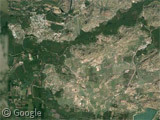
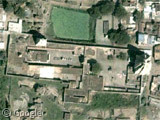
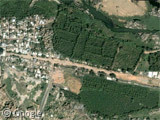
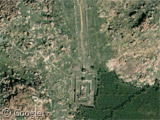
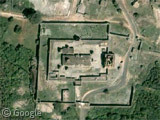
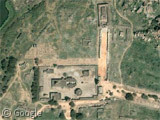
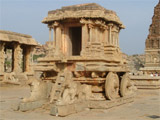
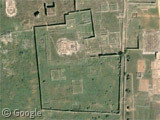
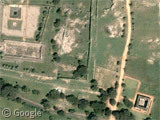
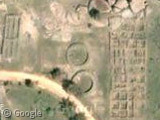
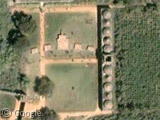
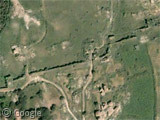
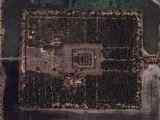
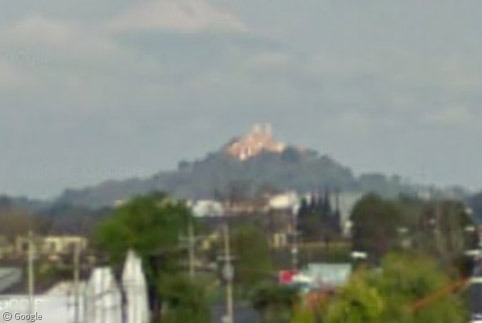
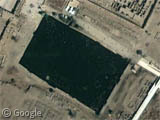
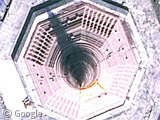
Sharing statistics
Share this site